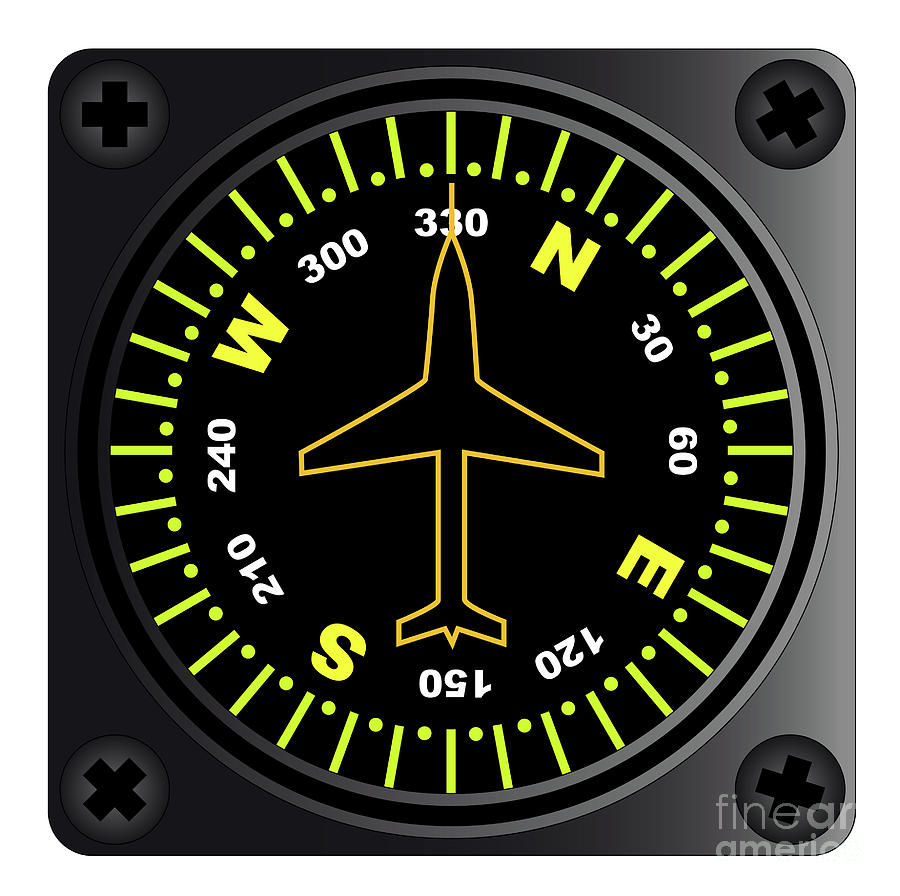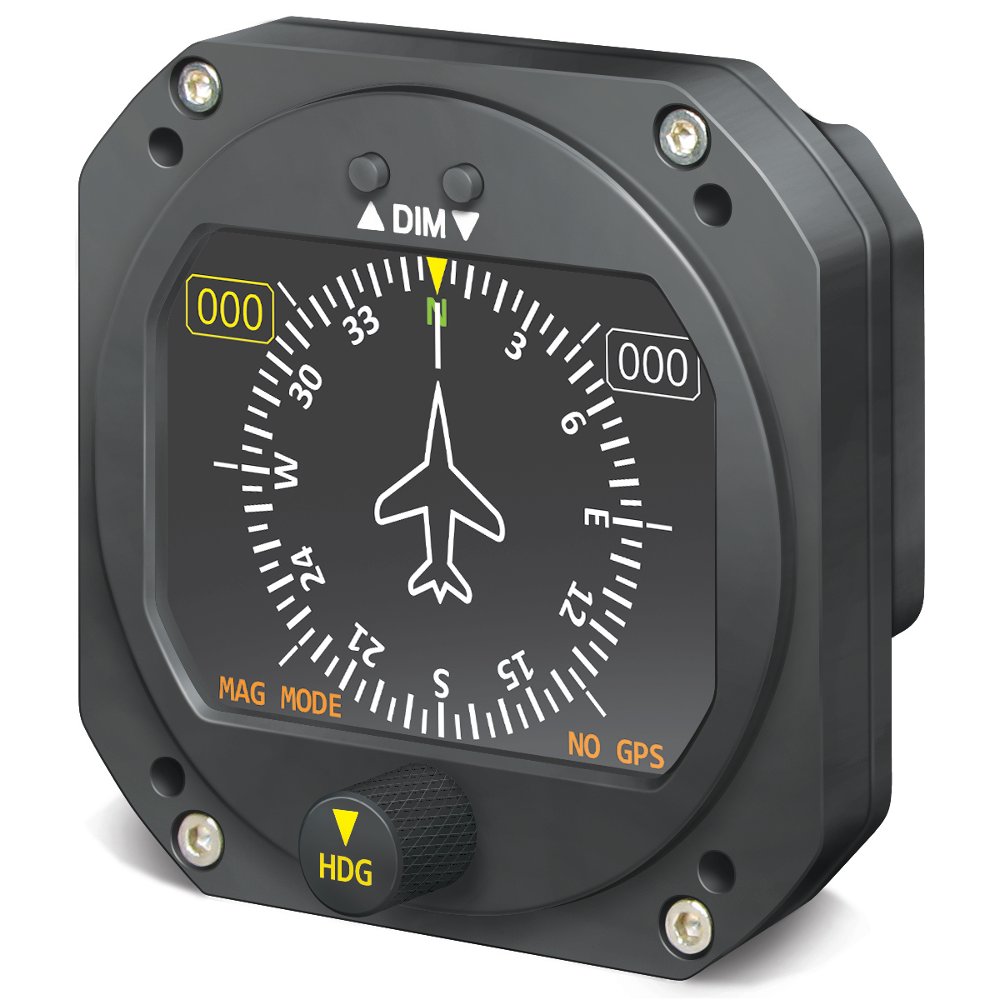digital Compass Aviation: Navigating the Modern Skies
In the dynamic world of aviation, where precision and safety are paramount, the humble compass has undergone a remarkable transformation. From the magnetic needles of yore, we have transitioned to the sophisticated realm of digital compasses. These electronic marvels have revolutionized how pilots navigate, enhancing flight safety, efficiency, and overall situational awareness. This article delves into the intricacies of digital compass technology in aviation, exploring its principles, applications, and the profound impact it has had on modern flight.
1.1 The Magnetic Compass: A Foundation of Flight

For centuries, the magnetic compass, with its simple yet ingenious design, has served as the cornerstone of navigation. By aligning with Earth’s magnetic field, it provides a reliable indication of magnetic north. In early aviation, the magnetic compass played a crucial role, guiding pilots across vast distances. However, its limitations soon became apparent.
Magnetic Interference: The Earth’s magnetic field is not uniform and can be significantly distorted by local magnetic anomalies, such as iron deposits, electrical currents, and even the aircraft’s own metal structure.
1.2 The Rise of Electronic Compasses
To overcome the inherent limitations of the magnetic compass, electronic compasses emerged as a viable alternative. These devices utilize advanced sensors and sophisticated algorithms to determine aircraft heading more accurately.
2.1 Fluxgate Magnetometers

One of the most common types of electronic compasses used in aviation is the fluxgate magnetometer. This device measures the Earth’s magnetic field by passing an alternating current through a highly permeable core. The magnetic field induces a voltage in a secondary coil, which is then processed to determine the aircraft’s heading.
2.2 Ring Laser Gyroscopes
Ring laser gyroscopes provide a highly accurate and reliable means of measuring aircraft heading. They utilize the principles of laser interferometry to detect rotation. Two laser beams travel in opposite directions around a closed loop within the gyroscope. When the aircraft rotates, the path lengths of the two beams change, resulting in a measurable phase shift. This phase shift is directly proportional to the aircraft’s rotation rate, allowing for precise heading determination.
2.3 Inertial Measurement Units (IMUs)
Modern electronic compasses often incorporate Inertial Measurement Units (IMUs). These integrated systems combine accelerometers and gyroscopes to provide a comprehensive measure of aircraft motion, including acceleration, angular velocity, and orientation. By fusing data from multiple sensors, IMUs can significantly enhance the accuracy and reliability of heading information, particularly in challenging flight conditions.
3.1 Enhanced Accuracy and Reliability
Digital compasses offer significantly improved accuracy compared to traditional magnetic compasses. They are less susceptible to magnetic interference and can provide more precise heading information, even in the presence of strong magnetic disturbances.
3.2 Improved Response Time
Electronic compasses exhibit faster response times than their mechanical counterparts. They can quickly adapt to changing aircraft attitudes and provide real-time heading information, which is crucial for maintaining situational awareness and making timely flight decisions.
3.3 Integration with Flight Management Systems (FMS)
Digital compasses seamlessly integrate with modern Flight Management Systems (FMS). This integration allows for more accurate navigation, improved flight planning, and enhanced autopilot performance.
3.4 Reduced Maintenance Requirements
Electronic compasses generally require less maintenance compared to traditional magnetic compasses. They have fewer moving parts, reducing the risk of mechanical failures and simplifying maintenance procedures.
4.1 General Aviation
Digital compasses have become increasingly prevalent in general aviation aircraft, from small single-engine planes to larger turboprops. They provide pilots with reliable heading information, enhancing safety and improving the overall flying experience.
4.2 Commercial Aviation
In commercial airliners, digital compasses play a critical role in the navigation and guidance systems. They provide essential input to the flight control systems, autopilots, and navigation displays, ensuring safe and efficient flight operations.
4.3 Military Aviation
Military aircraft rely heavily on digital compasses for a variety of missions, including combat, reconnaissance, and search and rescue. These systems must be highly accurate and robust to withstand the demands of military operations.
5.1 Advancements in Sensor Technology
Ongoing advancements in sensor technology, such as the development of more sensitive and accurate magnetometers and gyroscopes, will continue to improve the performance of digital compasses.
5.2 Integration with GPS and Other Navigation Systems
Future digital compass systems will likely see further integration with GPS and other navigation systems, providing a more comprehensive and robust navigation solution.
5.3 Artificial Intelligence and Machine Learning
The application of artificial intelligence and machine learning algorithms can enhance the accuracy and reliability of digital compasses by enabling them to learn and adapt to changing environmental conditions and aircraft dynamics.
Digital compasses have revolutionized aviation navigation, providing pilots with unprecedented levels of accuracy, reliability, and situational awareness. As technology continues to advance, we can expect to see even more sophisticated and integrated compass systems that will further enhance flight safety and efficiency in the years to come.
digital compass aviation
